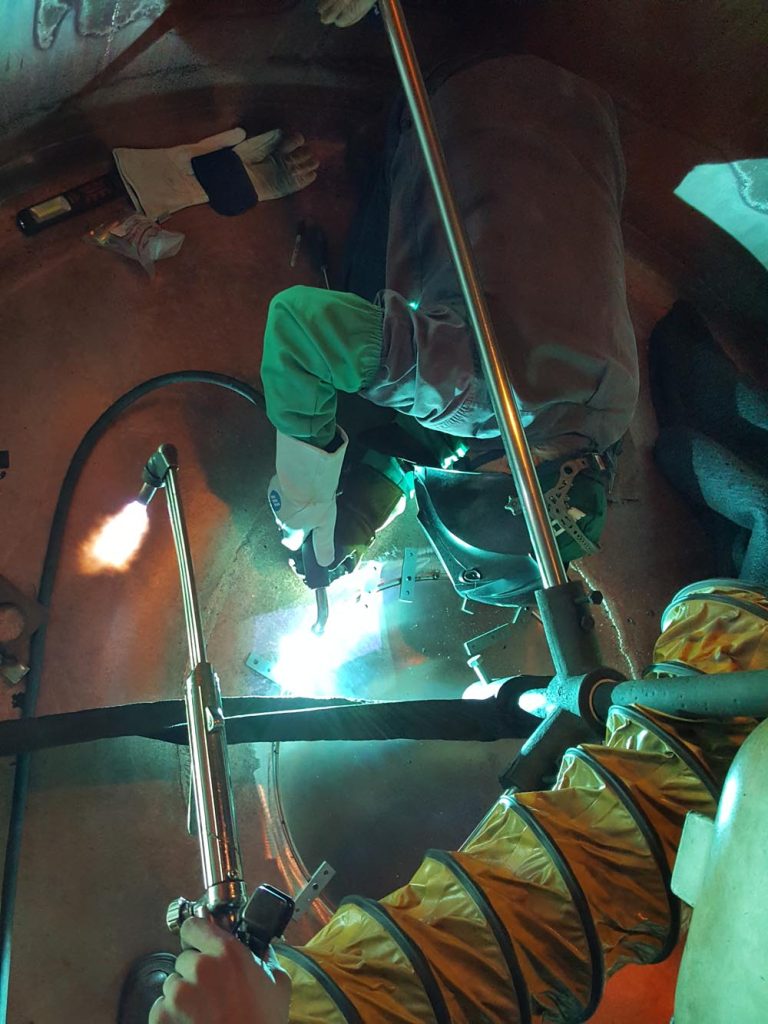A Toast to Tradition: Celebrating Classic Beer Styles and Techniques
- The enduring allure of classic beer styles
- Importance of preserving traditional brewing techniques
- Overview of the article’s focus on classic beer styles and their significance
- Brief history of beer and its cultural significance
- Emergence of diverse regional beer styles
- Influence of technological advancements on beer production
Classic Beer Styles: A Journey Through Time
- Pale Ale and IPA: Exploring the British roots and global impact
- Origins and historical context
- Evolution of IPA and its resurgence
- Pilsner: Celebrating the crispness of Czech brewing
- Birth of the Pilsner style in Plzeň
- Characteristics and brewing techniques
- Belgian Abbey Ales: Trappist traditions and flavorful complexities
- Trappist monasteries and their brewing heritage
- Varieties within the Belgian Abbey Ale style
The Art of Traditional Brewing Techniques
- Importance of understanding foundational brewing methods
- Mashing and lautering: Extracting sugars and flavors
- Step-by-step process and its impact on beer profile
- Hopping techniques: Balancing bitterness, aroma, and flavor
- Early vs. late hopping methods
- Dry hopping for enhanced aroma
- Fermentation: Yeast’s role in shaping beer character
- Top-fermenting vs. bottom-fermenting yeast strains
- Temperature control and its influence on flavor
Modern Innovations within Tradition
- Craft breweries’ creative interpretations of classic styles
- Fusion of traditional methods with contemporary ingredients
- Reviving forgotten styles and techniques
The Cultural Significance of Classic Beers
- Connection between beer, history, and local identity
- Role of classic styles in today’s craft beer movement
- Beer as a medium for cross-generational bonding and storytelling
Navigating the Future While Honoring the Past
- Challenges in preserving traditional beer styles
- Balancing innovation with tradition in a rapidly changing industry
- Importance of education and appreciation for classic beer styles
- Recap of the enduring appeal of classic beer styles
- Call to action for readers to explore, savor, and support tradition
- Final toast to the time-honored art of brewing classic beers
A Toast to Tradition: Celebrating Classic Beer Styles and Techniques
In a world of ever-changing trends and rapid innovation, there’s something undeniably alluring about the classics. This sentiment holds true even in the realm of beer, where timeless styles and traditional techniques continue to captivate enthusiasts and brewers alike.
While the craft beer movement has ushered in a wave of experimentation, it’s crucial not to overlook the significance of preserving classic beer styles and the techniques that have shaped them.
The Evolution of Beer Styles
Beer has a rich history that dates back millennia, transcending cultures and continents. Over time, this ancient libation has evolved into a diverse range of styles, each with its own unique character. From the hop-forward pale ales of England to the crisp pilsners of Czechia, beer styles reflect the cultural tapestry of their regions.
Technological advancements, from the industrial revolution to modern-day innovations, have played a pivotal role in shaping the trajectory of beer production, allowing for greater precision and consistency.
Classic Beer Styles: A Journey Through Time
1. Pale Ale and IPA: Exploring the British Roots and Global Impact
The story of beer’s global dominance wouldn’t be complete without acknowledging the British influence. The pale ale, a staple in English pubs, gave rise to the India Pale Ale (IPA), a style born out of necessity during the British Empire’s expansion.
While the IPA faded from popularity, it made a remarkable resurgence in the craft beer movement, leading to a multitude of interpretations that pushed the boundaries of bitterness and aroma.
2. Pilsner: Celebrating the Crispness of Czech Brewing
Nestled in the heart of Czechia, the town of Plzeň introduced the world to the Pilsner style in the 19th century. This lager, known for its pale color and crisp taste, is a testament to the art of balance.
Its inception was a response to the growing demand for a refreshing beer that could withstand long journeys. Today, Pilsner remains a symbol of Czech brewing mastery, showcasing the importance of quality ingredients and meticulous brewing techniques.
3. Belgian Abbey Ales: Trappist Traditions and Flavorful Complexities
In the quiet corners of Belgian monasteries, a different kind of brewing tradition thrived. Belgian Abbey Ales, often brewed by Trappist monks, embody a rich tapestry of flavors, aromas, and traditions.
These beers are a testament to the patience required for fermentation, as well as the harmonious marriage of yeast and malt. From the Dubbels to the Tripels, each Abbey Ale offers a glimpse into centuries-old brewing techniques that have stood the test of time.
The Art of Traditional Brewing Techniques
Central to the appeal of classic beer styles are the foundational brewing methods that give rise to their distinct flavors and profiles.
1. Mashing and Lautering: Extracting Sugars and Flavors
The mashing process involves steeping malted grains in water to convert starches into fermentable sugars. Lautering then separates the sugary liquid (wort) from the spent grains. These steps influence the beer’s body, sweetness, and mouthfeel.
2. Hopping Techniques: Balancing Bitterness, Aroma, and Flavor
Hops contribute bitterness, aroma, and flavor to beer. Early hopping during the boil imparts bitterness, while late hopping and dry hopping enhance aroma and flavor. This delicate dance between hops and malt is a hallmark of classic beer styles.
3. Fermentation: Yeast’s Rolein Shaping Beer Character
Yeast is a brewer’s magical ingredient, transforming sugars into alcohol and carbon dioxide. Different yeast strains, fermentation temperatures, and vessel types influence a beer’s aroma, flavor, and mouthfeel.
Modern Innovations within Tradition
While honoring tradition is paramount, modern craft breweries have found ways to infuse creativity into classic styles.
A. Craft Breweries’ Creative Interpretations of Classic Styles
Craft brewers embrace experimentation while staying true to the essence of classic styles. This has led to the emergence of hybrid beers that marry tradition with innovation, captivating both purists and adventurous drinkers.
B. Fusion of Traditional Methods with Contemporary Ingredients
From exotic fruits to unique spices, modern breweries are breathing new life into classic styles by incorporating innovative ingredients. This approach revitalizes tradition while enticing curious palates.
C. Reviving Forgotten Styles and Techniques
Some craft brewers are diving into history books to resurrect forgotten beer styles. By rediscovering centuries-old recipes and techniques, they honor the past while educating modern beer enthusiasts.
The Cultural Significance of Classic Beers
A. Connection Between Beer, History, and Local Identity
Classic beer styles are often intertwined with a region’s history and identity. These styles hold stories that resonate with the people, showcasing the cultural significance of beer beyond its taste.
B. Role of Classic Styles in Today’s Craft Beer Movement
The craft beer movement owes much of its foundation to classic styles. As brewers push the envelope with experimental offerings, traditional styles provide a grounding force, reminding us of beer’s timeless appeal.
C. Beer as a Medium for Cross-Generational Bonding and Storytelling
Sharing a classic beer can bridge generations, fostering conversations about the past and present. Beer becomes a vessel for sharing stories, experiences, and memories.
Navigating the Future While Honoring the Past
A. Challenges in Preserving Traditional Beer Styles
As the beer landscape evolves, classic styles face the challenge of maintaining relevance in a market driven by novelty. Preserving these styles requires a balance between tradition and adaptation.
B. Balancing Innovation with Tradition in a Rapidly Changing Industry
The key to the continued success of classic beer styles lies in the delicate balance between honoring tradition and embracing innovation. Breweries must navigate this tightrope to remain both authentic and exciting.
C. Importance of Education and Appreciation for Classic Beer Styles
Educating consumers about the history, flavors, and techniques behind classic styles fosters an appreciation for the artistry involved. By understanding the roots of these styles, drinkers can connect on a deeper level.
Conclusion
In a world where trends come and go, classic beer styles stand as steadfast reminders of the artistry, history, and craftsmanship that define brewing.
As we raise our glasses to pale ales, pilsners, and Belgian abbey ales, let’s also raise a toast to the time-honored traditions that have gifted us these timeless treasures. In celebrating the past, we embark on a journey that enriches the present and safeguards the legacy of beer for generations to come.
RESOURCES:
Brewers Association: The Brewers Association website provides a wealth of information about various beer styles, brewing techniques, and the history of beer. They often publish articles, guides, and resources related to traditional brewing. Website: https://www.brewersassociation.org/
BeerAdvocate: BeerAdvocate offers a comprehensive database of beer styles, reviews, and articles. You can find detailed descriptions and histories of classic beer styles, as well as discussions on traditional techniques. Website: https://www.beeradvocate.com/
BJCP (Beer Judge Certification Program): The BJCP provides guidelines and resources for beer styles, along with historical context and flavor profiles. Their resources are often used by homebrewers and judges to understand classic styles. Website: https://www.bjcp.org/
Craft Beer & Brewing Magazine: This magazine covers a wide range of topics related to craft beer, including articles on classic beer styles, brewing techniques, and industry trends. Website: https://beerandbrewing.com/
Books and Academic Sources: Look for authoritative books on the history of beer, brewing techniques, and beer styles. Authors like Michael Jackson, Randy Mosher, and Garrett Oliver have written extensively on these topics.
ABOUT PRO ENGINEERING / MANUFACTURING INC.
Trusted | Knowledge | Quality
We have been involved in pasteurizers since 1977.
PRO Engineering / Manufacturing Inc. has developed a range of small, medium, and large-sized tunnel & batch pasteurizers to fit the needs of BrewMasters and Beverage Makers. When our customers asked for more compact as well as full-size tunnel pasteurizers, PRO developed models to fit our customers’ needs. Then our customers needed a batch pasteurizer. We now provide batch pasteurizers; PRO is a business that continually innovates to meet customer needs.
For more than 40 years, we have been delivering solutions for beverage product shelf stability and consumption safety.
Edward A. Michalski CEO
Ed Michalski started his career in the beverage industry by designing stainless steel, higher flow, spray headers for Pabst Brewing. Along with the header design he also developed a process to produce the new headers.
Ed, along with his brother David, formed PRO Engineering / Manufacturing Inc. Based on what they learned by re-designing and refurbishing other manufacturers’ pasteurizers, Ed and PRO started to offer the pasteurizer marketplace superior new pasteurizers. PRO Engineering / Manufacturing Inc. has been designing and manufacturing great pasteurizers for over four decades.
For more information on tunnel and batch pasteurization contact PRO Engineering / Manufacturing, Inc. at [email protected] or call (414) 362-1500 and ask for Ed Michalski, CEO.
Partner with a PRO!… PRO Engineering / Manufacturing Inc.
Internal Resources:













